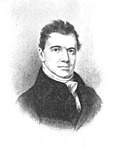| |||||
| Decades: | |||||
|---|---|---|---|---|---|
| See also: | |||||
| 1776 in the United States |
| 1776 in U.S. states |
|---|
| States |
| List of years in the United States by state or territory |

1776 is celebrated in the United States as the official beginning of the nation, with the Declaration of Independence of the Thirteen Colonies from the British Empire issued on July 4.

















